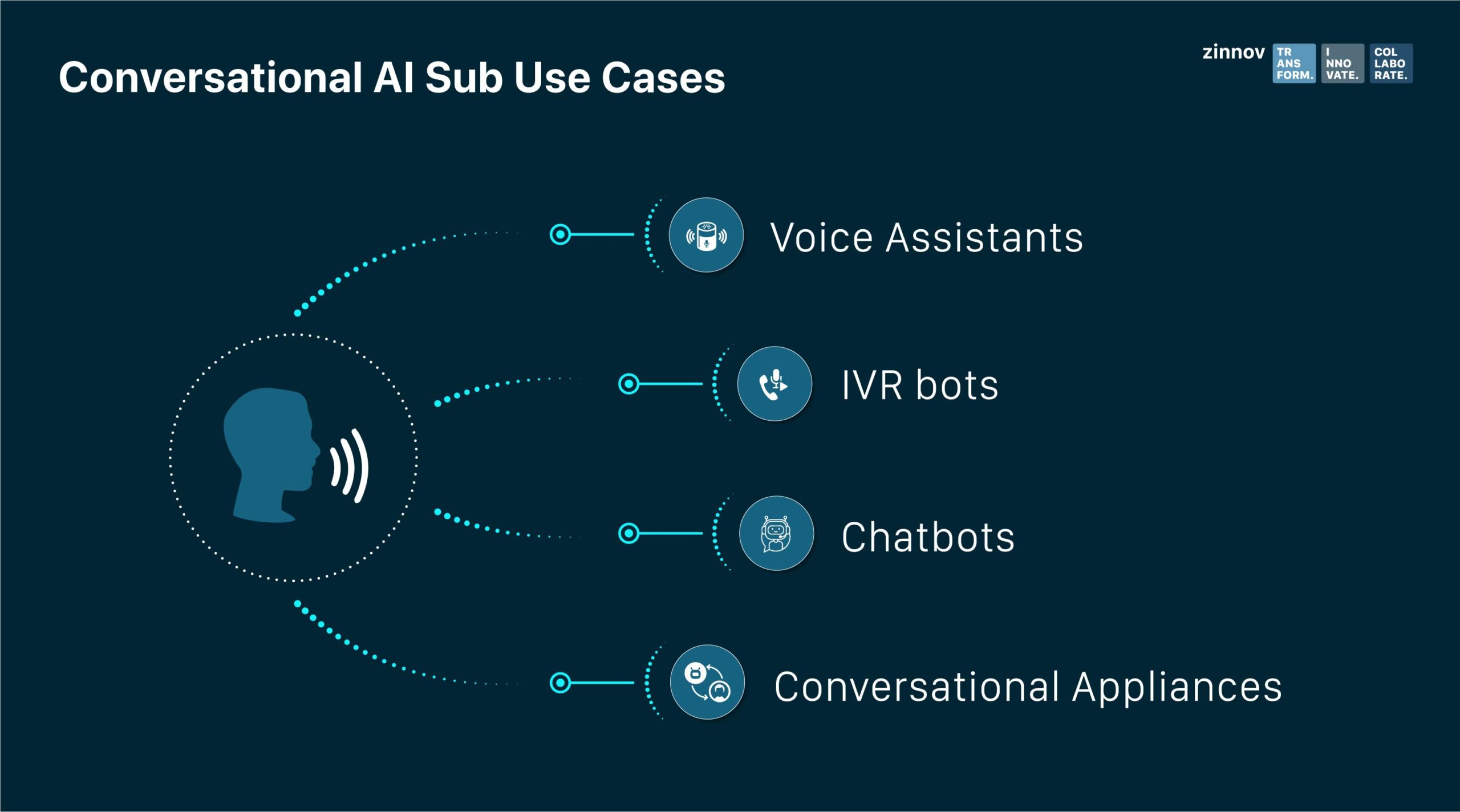|
|
Conversing with a bot which was once derided as a fantasy, became reality when Facebook announced the launch of a developer-friendly platform to build chatbots on Facebook Messenger, back in 2016. Conversational AI refers to voice-based assistants or chatbots used for automating communication with machines. Powered by Machine Learning capabilities, these self-learning bots have replaced the traditional ways of human-machine interaction with human-like dialogues, transforming user experiences by making them simpler and personalized. Food ordering, voice-activated drive-throughs, in-car voice controls, IVR bots, etc. – conversational AI has touched every aspect of human life today.

Another thing that has impacted humans across the globe is the ongoing pandemic, COVID-19. Its impact has been felt across organizations, irrespective of sectors. But COVID-19 is proving to be an accelerator for Conversational AI adoption.
Here’s a look at some Conversational AI use cases where the technology has made it easier to combat the effects of COVID-19:
The spread of COVID-19 has forced enterprises to cut down on expenses, resulting in layoffs and furloughs globally. Contact centers are one of the biggest cost centers for companies. Some estimates show that companies spend close to USD 1Tn on call center IT, with more than 265 Bn customer calls being serviced per annum. Although most companies are contemplating a reduction in their call center workforce, there is a significant rise in the number of calls to contend with. Fast-changing government guidelines, especially across Banking and Financial Services, and rising concerns about personal well-being are leading to increased confusion amongst the masses, who are turning to customer service agents for support to conduct their business.

Along with the surge in the number of calls, the average call duration, which averages between 3-6 minutes for most contact centers, is expected to rise to 10+ minutes in the wake of COVID-19. To be able to handle the mounting pressure, enterprises are fast adopting conversational AI in their contact centers to augment existing human effort, while also freeing up their bandwidth for more strategic work. This can not only save companies millions of dollars in costs, but also help them optimize call center operations. A case in point is IBM Watson Assistant, which is estimated to save USD 5.50 per conversation across contact centers. In the current times, Public sector, BFSI, and Telecom verticals emerge as the biggest adopters of Conversational AI globally.
Following are some of the Conversational AI adoption stories and launches in the wake of COVID-19:
Zinnov believes that COVID-19 has further escalated the ongoing digital trend in contact centers and will lead to permanent adoption of Conversational AI technology, complemented by back-end Automation. This will enhance customer service, while also freeing up bandwidth for people to focus on more strategic work.
As the world fights COVID-19, the spread of misinformation about the pandemic is proving to be yet another battle to be fought equally hard. Conversational AI has become an essential weapon in the arsenal for Healthcare and Public sector entities that are trying hard to spread the right information and awareness amongst the public. The Indian Council of Medical Research (ICMR) has collaborated with IBM to bring its Artificial Intelligence-powered Watson Virtual Assistant on its portal to respond to COVID-19-related queries. Technology giant Microsoft launched its Healthcare Bot service to deliver medical care and assist healthcare providers to spread the right information to the public.
Enterprises globally have pivoted their operations to a work-from-home model. In fact, nearly 90% of the IT employees in India are working from home due to COVID-19. Giants like Mondelez, Barclays, Nationwide, Twitter, etc., are even exploring permanent work from home options for their employees. However, this sudden shift to virtual working environments has left many unanswered questions for employees. Further, managing distributed teams and addressing their queries/concerns in real-time has become a burdensome process for enterprises. This has led to newfound attention in B2B virtual assistants.
From scheduling meetings to answering critical questions at a simple voice or text command, Conversational AI can do it all for employees. These conversational bots can further help companies automate administrative tasks like screening resumes, scheduling interviews, and in some cases, conducting actual interviews, or managing paperwork. A classic example here would be Olivia, an AI assistant by Paradox that assists global companies like McDonald’s, CVS Health, and Unilever in automating HR processes by leveraging Conversational AI. As the demand for B2B conversational bots rises, collaboration solution providers are also integrating their software with Conversational AI. Cisco recently updated its WebEx meetings by rolling out a new version of WebEx Assistant, its built-in voice assistant.
The e-Commerce sector is witnessing a spike in the COVID-19 era, which is expected to continue on the other side of the pandemic. Retail giant Target’s announcement of its acquisition of the same-day-delivery technology from the delivery start-up “Deliv,” is a testament to this fact. The surge in e-Commerce operations is expected to elevate the adoption of Conversational AI in Retail for product ordering, answering customer queries, etc. Recently, Speech technology giant Nuance partnered with Alberton’s Grocery Stores to provide Voice Assistant and Live Chat capabilities, catering to the needs of people shopping for groceries online, during the COVID-19 pandemic. It also provides answers to any questions that shoppers may have about delivery, store hours, and product availability.
Technology companies are rapidly upgrading their Conversational AI product portfolios to stay ahead of the rising competition in this space. In light of this, we see the following technology trends emerging in this space:
As we see business leaders increasing their stakes on Conversational AI, it is imperative for technology companies to deliver on the rising customer requirements through high-quality products and services.
Conversational AI is on the path to enhance customer service. As some technology companies predict, enterprises could have a virtual bot talking to millions of customers in the near future. The above-mentioned use cases are a testament to this fact. COVID-19 has clearly accelerated the adoption and implementation of Conversational AI, even going so far as to help develop newer use cases. But the true implication of this acceleration will only be witnessed in the post-COVID era and how quickly enterprises across verticals will adopt this technology.
On the demand front, our analysis shows that in the near future, BFSI, Public Sector, and Telecom will emerge as the leading adopters of Conversational AI, followed by Healthcare and Retail. Automotive, one of the hardest-hit verticals by COVID-19, once held the largest market share for Virtual Assistants. It is expected to see some short-term reduction in this area; however, in the longer run, the demand for Conversational AI by the Automotive sector is expected to revive.
Having a strong focus from both the demand and the supply fronts, the market for Conversational AI is expected to rise exponentially in the future. This is apparent from the steadily rising start-up funding in this space. In a recent example, contact center AI start-up ASAPP raised USD 185 Mn in funding, as the coronavirus pandemic pushed up the call center volume. With continuous technology improvements and more such innovative start-ups coming up, Conversational AI is all set to have a lucrative future.